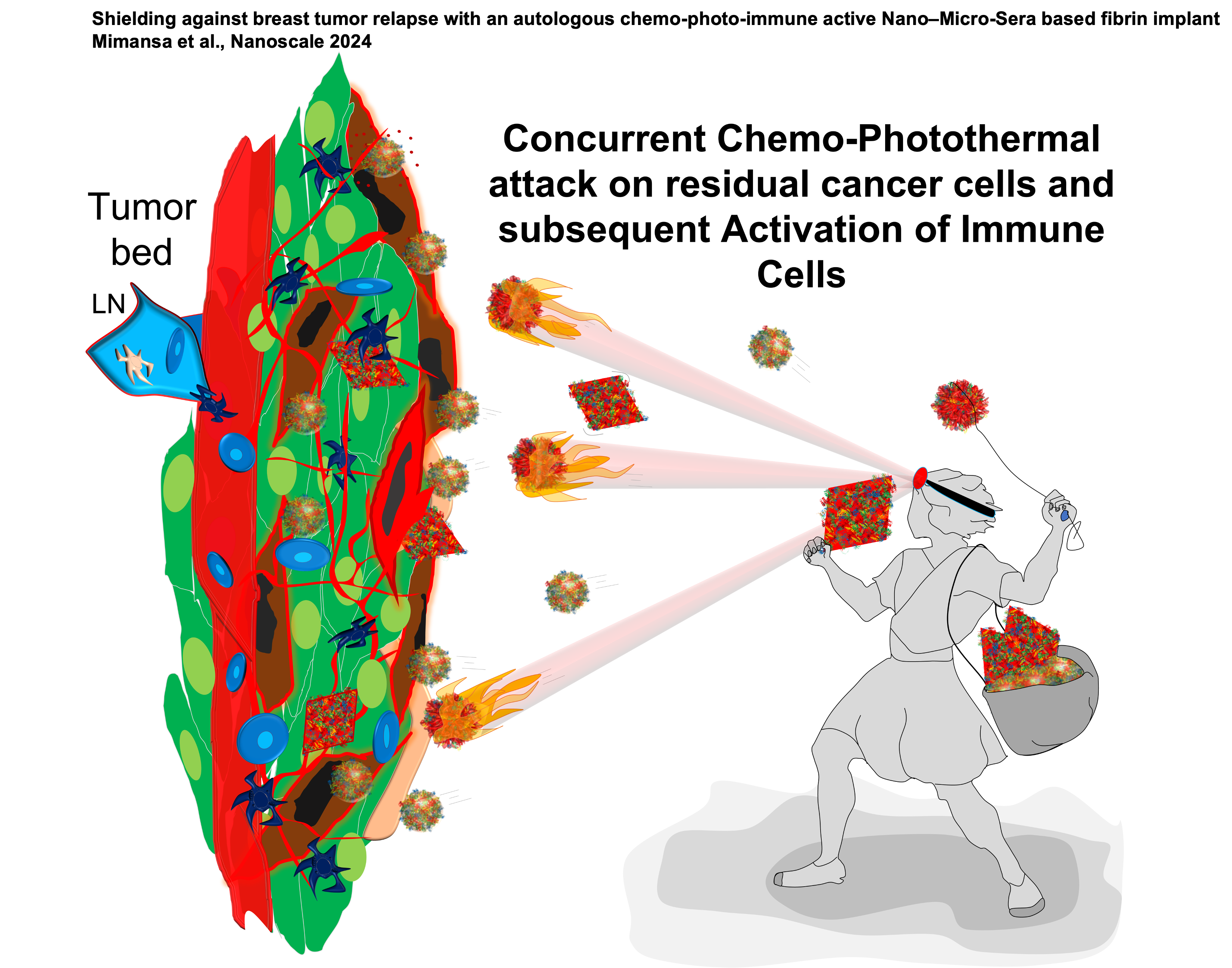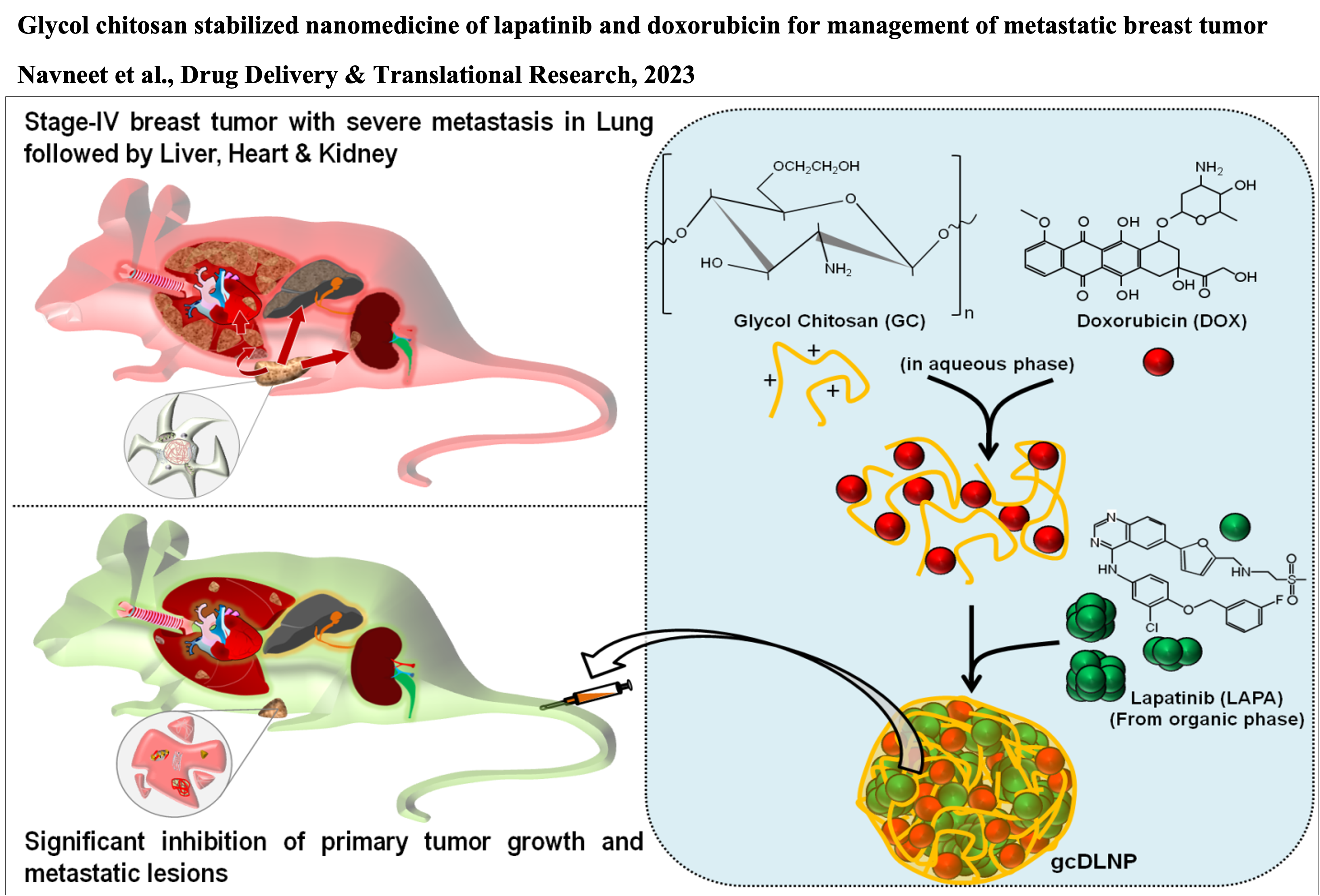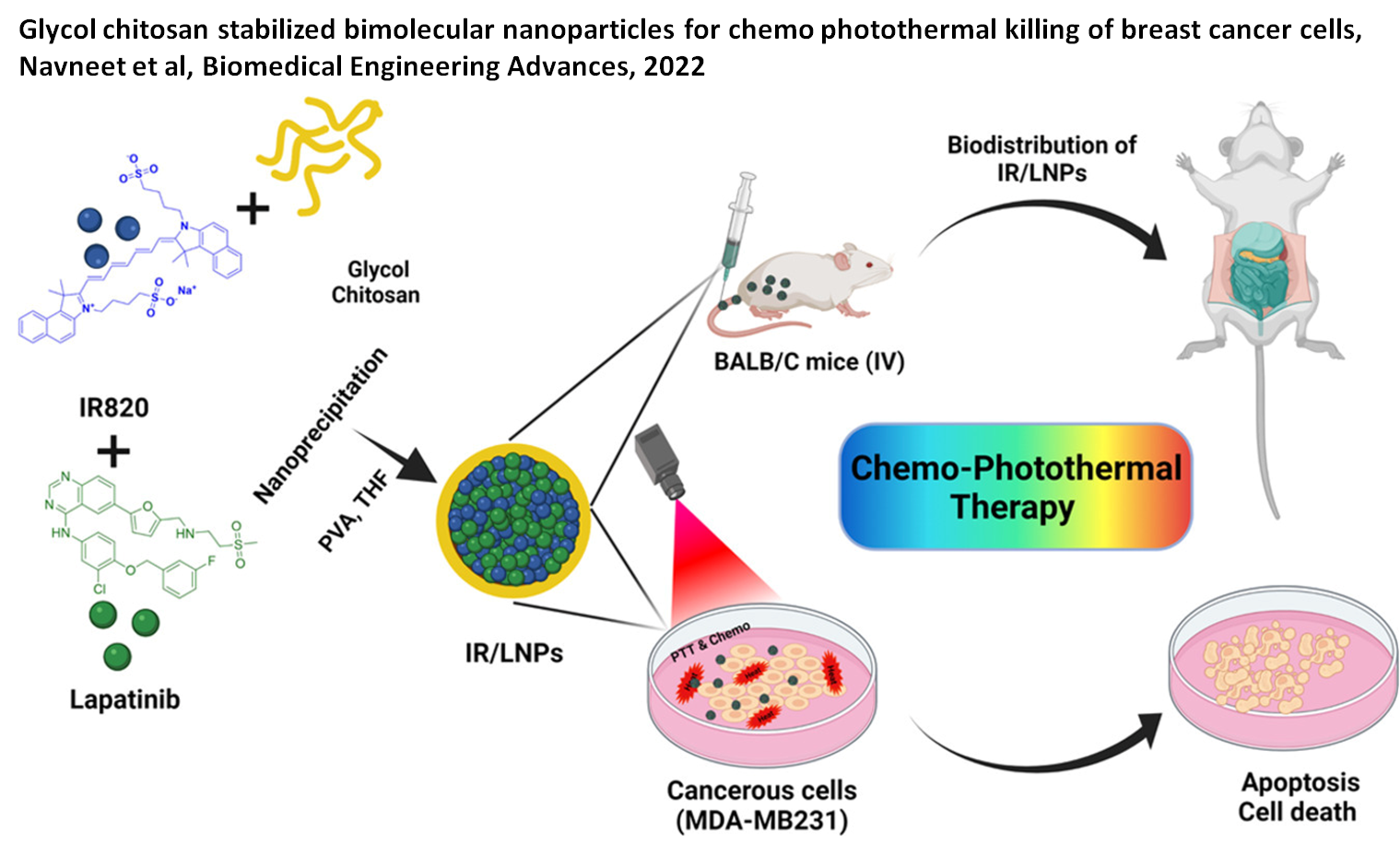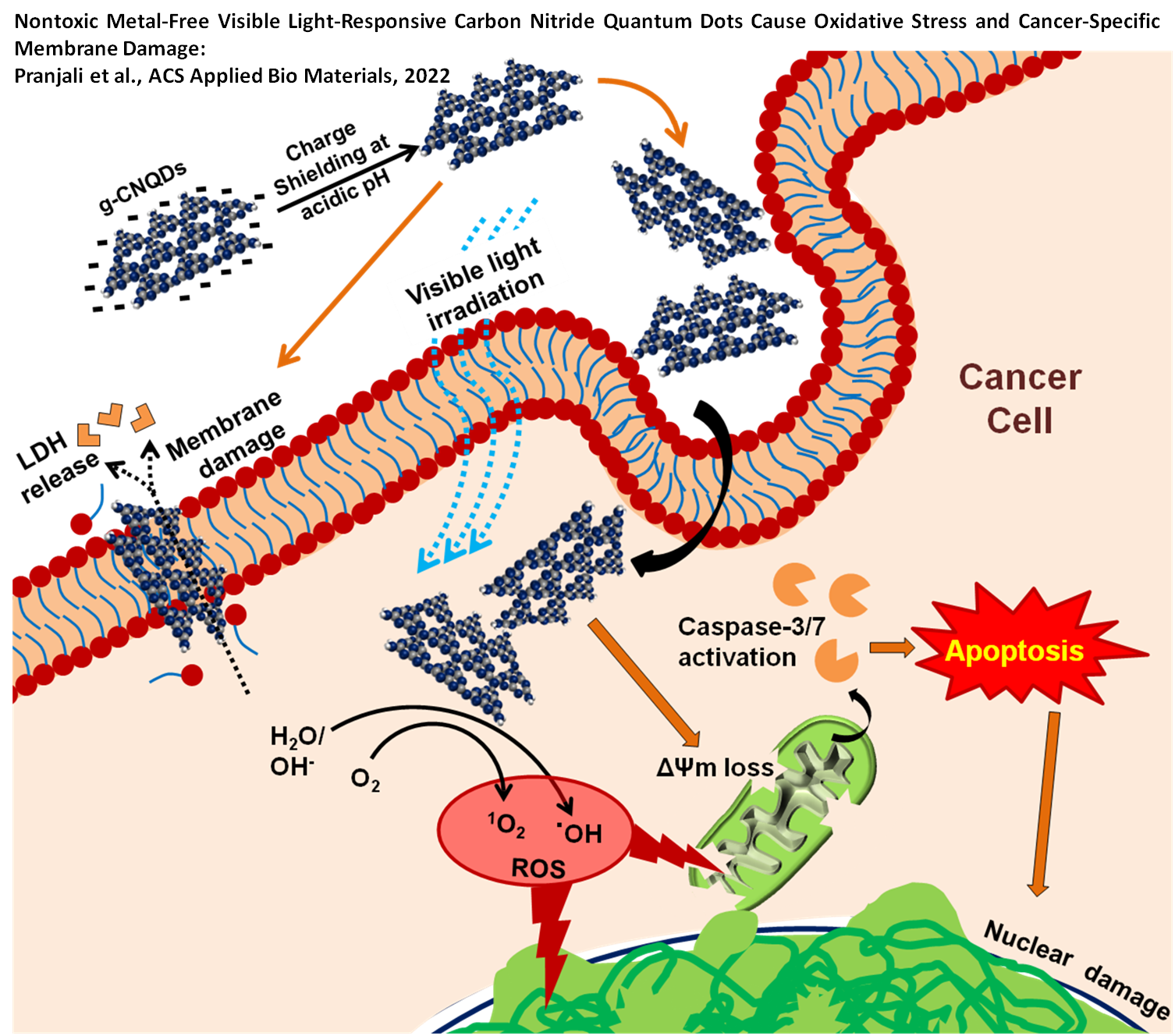Faculty Directory

Dr. Asifkhan Shanavas
Associate Professor (Scientist-E) | Coordinator (PhD Examination) | Member Secretary (IBSC)
Welcome to the Inorganic and Organic Nanomedicine (ION) Lab! Scroll down to learn about the exciting work we do. Students interested in research internships and PhD may check https://www.inst.ac.in/internship-programme and https://www.inst.ac.in/careers respectively for eligibility and application deadlines
Contact Information :
-
Email:
asifkhan@inst.ac.in -
Google Link:
Google Link
-
Organo-Inorganic Biomaterials for Theranostics composite biomaterials for simultaneous therapy and imaging of solid tumors.
-
Plasmonic nanomaterials for Photothermal Therapy to combat undruggable advanced cancers.
-
Targeted combinatorial nanomedicines that target multiple molecular mechanisms in advanced tumors
-
Hydrogels are three dimensional cross linked network of hydrophilic polymers, extensively used for biomedical, biotechnological and pharmaceutical applications. The functionality of hydrogel could be enhanced by synthesizing hydrogel nanocomposites that can both enable controlled release of drugs in a cancerous microenvironment and NIR -induced localized heat generation for combined chemo-photothermal therapy (Chemo-PTT), a potent anticancer therapeutic approach. Herein, Navneet et al developed a plasmonically active hydrogel with carboxyl methyl chitosan (CMC) as the supporting matrix cross linked with ZIF8 nanoparticles and Mg 2+. The ZIF8 nanoparticles were loaded in situ with the ultra small gold nanoparticles (USGNPs) and anticancer drug, curcumin for localized Chemo-PTT. The plasmonic hydrogel (PHG) showed visco-elastic and self-healing properties governed by the supramolecular interaction between ZIF8 and CMC. The injectable PHG exhibited photothermal conversion efficiency of ⁓41%. Chemo-PTT with Cur-PHG effectively inhibited 4T1 breast cancer under both in vitro and in vivo conditions. The biocompatible PHG was found to release UsGNPs from tumor tissue post intra tumoral injection followed by predominant distribution in liver and kidney. Due to the size of UsGNPs (<5nm), they were consistently detected in the urine over the period of treatment confirming overall degradable nature of PHG that delivers a localized outcome with negligible systemic toxicity.
More info: Navneet Kaur, Mimansa, Priyanka Sharma, Panangattukara Praveen Kumar, Prakash P. Neelakandan, Asifkhan Shanavas, ACS Applied Polymer Materials, 2022 ( https://doi.org/10.1021/acsapm.2c01646 )
-
Graphitic carbon nitride (also known as g-CN or g-C3N 4 ) has the intrinsic ability to generate electron–hole pairs under visible light illumination, resulting in the generation of reactive oxygen species (ROS). We report g-CN quantum dots (g-CNQDs) as a standalone photodynamic transducer for imparting significant oxidative stress in glioma cells, manifested by the loss of mitochondrial membrane potential. With an optimized treatment time, visible light source, and exposure window, the photodynamic treatment with g-CNQDs could achieve ∼90% cancer cell death via apoptosis. The g-CNQDs, otherwise biocompatible with normal cells up to 5 mg/mL, showed ∼20% necrotic cancer cell death in the absence of light due to membrane damage induced by a charge shielding effect at the acidic pH prevailing in the tumor environment. Acute toxicity analysis in C57BL/6 mice with intravenously injected g-CNQDs at a 20 mg/kg dose showed no signs of inflammatory response or organ damage.
More info: Pranjali Yadav, Mimansa, Kamalakannan Kailasam*, Asifkhan Shanavas*, ACS Applied Bio Materials, 2022 ( https://doi.org/10.1021/acsabm.1c01219 )
-
Disintegrable inorganic nanoclusters (GIONs) with gold seed (GS) coating of an iron oxide core with a primary nanoparticle size less than 6 nm were prepared for theranostic applications. The GIONs possessed a broad near-infrared (NIR) absorbance at ∼750 nm because of plasmon coupling between closely positioned GSs on the iron oxide nanoclusters (ION) surface, in addition to the ∼513 nm peak corresponding to the isolated GS. The NIR laser-triggered photothermal response of GIONs was found to be concentration-dependent with a temperature rise of ∼8.5 and ∼4.5 °C from physiological temperature for 0.5 and 0.25 mg/mL, respectively. The nanoclusters were nonhemolytic and showed compatibility with human umbilical vein endothelial cells up to a concentration of 0.7 mg/mL under physiological conditions. The nanoclusters completely disintegrated at a lysosomal pH of 5.2 within 1 month. With an acute increase of over 400% intracellular reactive oxygen species soon after γ-irradiation and assistance from Fenton reaction-mediated supplemental oxidative stress, GION treatment in conjunction with radiation killed ∼50% of PLC/PRF/5 hepatoma cells. Confocal microscopy images of these cells showed significant cytoskeletal and nuclear damage from radiosensitization with GIONs. The cell viability further decreased to ∼10% when they were sequentially exposed to the NIR laser followed by γ-irradiation. The magnetic and optical properties of the nanoclusters enabled GIONs to possess a T2 relaxivity of ∼223 mM–1 s–1and a concentration-dependent strong photoacoustic signal toward magnetic resonance and optical imaging. GIONs did not incur any organ damage or evoke an acute inflammatory response in healthy C57BL/6 mice. Elemental analysis of various organs indicated differential clearance of gold and iron via both renal and hepatobiliary routes.
More info: Pranjali Yadav, Mimansa, Rafika Munawara, Kanchan Kapoor, Shubhra Chaturvedi, Kamalakannan Kailasam, Samir Kumar Biswas, Dhirendra Bahadur, Rohit Srivastava, Anil Kumar Mishra, Asifkhan Shanavas, ACS Biomaterials Science & Engineering, 2022 (https://doi.org/10.1021/acsbiomaterials.1c01579).
-
Subnanometer-sized metal nanoclusters (NCs) with diameters less than < 2 nm have emerged as promising materials in biomedical applications. Here we report the synthesis of near- infrared emitting (NIR) Au14 nanoclusters using a small therapeutic molecule D-penicillamine (DPA) as a surface stabilizing agent. We have characterized the morphology and composition of as-synthesized NCs using electron microscopy and mass spetrsometry techniques. The photophysics of the NCs was investigated using UV-Vis and photoluminescence (PL) spectroscopy. We found molecular like absorption features with three distinctive absorption bands at 390 nm, 456 nm, 590 nm, and a photoemission band at 696 nm. We found Au NCs specifically inhibited cancer cells in a dose-dependent manner through preferential uptake and imparting significant intracellular ROS. They did not show any acute toxicity in C57BL/6 mice at a dosage of 10 mg/Kg with predominant accumulation in the kidney at the end of 24 hours.
More info: Dipankar Bain, Mimansa, Aarti Devi, Subarna Maity, Asifkhan Shanavas*, Amitava Patra*, ACS Sustainable Chemistry & Enigneering, 2022 (https://doi.org/10.1021/acssuschemeng.2c03605)
-
Host derived serum proteome stabilised red-emitting gold quantum clusters (or Au-QC-NanoSera or QCNS) of size range ~2 nm have been synthesised in a first reported study. The host serum was taken from bovine, murine and human origins to establish the proof of concept. In-vitro biocompatibility with normal murine L929 fibroblast cells and radiosensitisation ability against PLC/PRF/5 hepatoma cells was established. A concentration dependant radiosensitisation effect of QCNS at differential γ-radiation doses was observed with almost 90% killing of cancer cells at a radiation dose of 5Gy. Acute and subacute safety, and non-immunogenicity of autologously derived QCNS was established in in-bred C57BL/6 mice. The biodistribution analysis revealed that the QCNS were effectively cleared from the body over a course of 28 days and were found to pose no major threat to the proper functioning and morphology of the mice.
More info: Kritika Sood, Pranjali Yadav, Manu Jamwal, Reena Das, Asifkhan Shanavas,(2023) Nanotheranostics,.7(3):316-326 (https://doi.org/10.7150/ntno.82978)
-
We report drug nanocrystals stabilized with host specific serum proteins with high loading (~63% w/w). The human serum derived curcumin nanoparticles (Cur-NanoSera) showed superior in vitro anti-cancer efficiency compared to free drug with substantial hemocompatibility. The pre-adsorbed protein coating impeded further protein corona formation even with repeated serum exposures. Acute & sub-acute toxicity evaluation post single and dual injections of C57BL/6 mice derived Cur-NanoSera showed no prominent inflammatory response or organ damage in the in-bred mice. Passive accumulation of Cur-NanoSera in tumor tissue significantly suppressed its growth in a syngeneic breast tumor model in addition to controlling tumor burden associated splenomegaly.
More info: Mimansa, Manu Jamwal, Reena Das, Asifkhan Shanavas, Biomacromolecules, 2022 (https://doi.org/10.1021/acs.biomac.2c00907)
-
Advanced breast cancer is known to be highly evasive to conventional therapeutic regime with a five-year survival rate of less than 30 % compared to over 90 % for early stages. Although several new approaches are being explored to improve the survival outcome, there is still some room for equipping existing drugs such as lapatinib (LAPA) and doxorubicin (DOX) to fight the systemic disease. LAPA is associated with poorer clinical outcomes in HER2 negative patients, the ability to also target EGFR has warranted its use in recent clinical trials. It is also poorly absorbed post oral administration and possesses low aqueous solubility. DOX on the other hand is avoided in vulnerable patients in advanced stages due to its pronounced off-target toxicity. To overcome the pitfalls of the drugs, we have fabricated a nanomedicine co-loaded with LAPA & DOX and stabilized with glycol chitosan, a biocompatible polyelectrolyte. With a loading content of ~11.5 % and ~15 % respectively, LAPA and DOX in a single nanomedicine showed synergistic action against triple negative breast cancer cells in comparison to physically mixed free drugs. The nanoparticles showed a time dependent association with cancer cells thereon inducing apoptosis leading to ~80 % cell death. The nanomedicine was found to be acutely safe in healthy Balb/c mice and could negate DOX induced cardio toxicity. The combination nanomedicine significantly inhibited both primary 4T1 breast tumor and its spread to lung, liver, heart and kidney compared to pristine drug controls. These preliminary data indicate bright prospects for the nanomedicine to be effective against metastatic breast cancer.
More info: Navneet Kaur, Priyanka Sharma, Mimansa, Mahendran Jaganathan, Rafika Munawara, Anjali Aggarwal, Asifkhan Shanavas, Drug Delivery and Translational Research, 2023 (https://doi.org/10.1007/s13346-023-01335-6)
-
Green synthesis of gold nanodendrites involving autologous serum proteins as both a template and stabilizer is reported. The nano dendrites, also termed ‘Plasmonic NanoSera’ (PNS), with a size ∼ 150 nm, possess anisotropic dense branches with a broad extinction cross section across the visible-near infrared (I & II) regions. The PNS, with a photothermal conversion efficiency of ∼58%, demonstrated significant phototoxicity in cancer cells associated with elevated intracellular reactive oxygen species. The PNS did not cause acute toxicity with intravenous administration at 20 mg kg−1 dosage. Intra-tumoral injection of autologous mouse serum protein-derived PNS followed by 808 nm Laser irradiation generated a ∼78% higher localized temperature rise compared to a saline control in the 4T1 breast tumor model, thereby suppressing both the tumor growth and tumor burden-associated splenomegaly. This proof-of-concept study validates the preclinical safety and host-specific photothermal efficacy of PNS.
More info: Mimansa, Smriti Bansal, Pranjali Yadav and Asifkhan Shanavas, Materials Advances, 2023 (https://doi.org/10.1039/D3MA00576C)
Current Group Members
-

PRIYADARSHI GAUTAM
Email: priyadarshi.ph24218@inst.ac.in
Reg. No.: PH24218
-
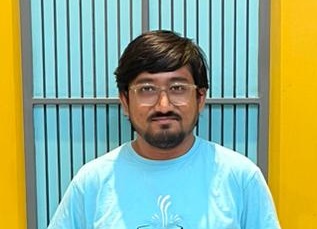
SWARAJ RANJAN GUPTA
Email: swaraj.ph24205@inst.ac.in
Reg. No.: PH24205
-
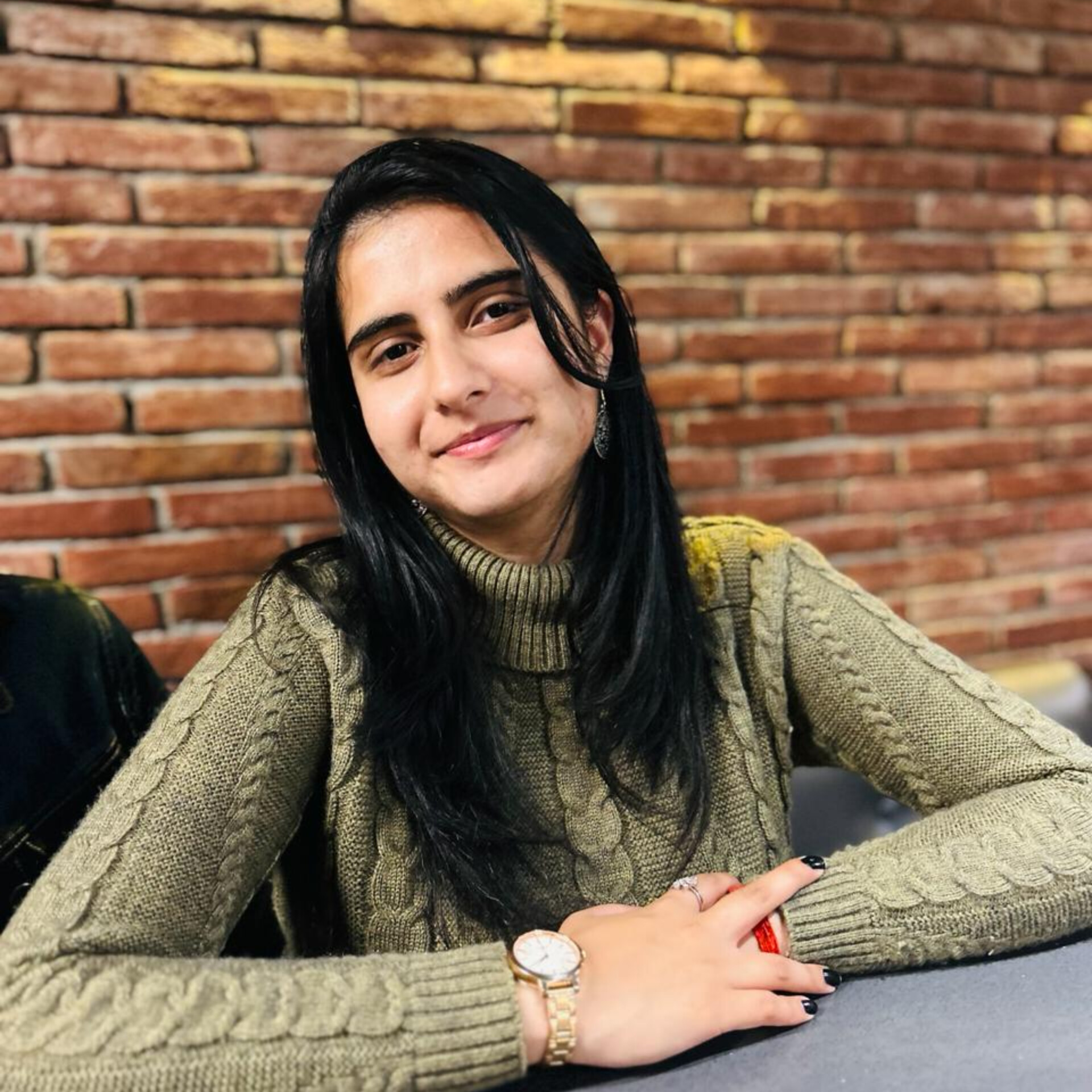
SHREIYA SHARMA
Email: shreiya.ph24202@inst.ac.in
Reg. No.: PH24202
-
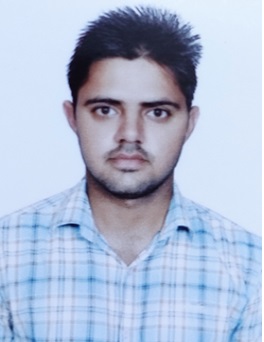
DEEPAK KUMAR
Email: deepak.ph23231@inst.ac.in
Reg. No.: PH23231
-
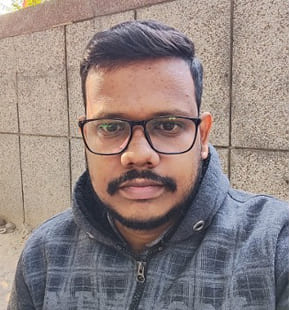
MR. JOHNS PAUL V
Email: johns.ph22234@inst.ac.in
Reg. No.: PH22234
-

MR. MAHENDRAN J.
Email: mahendran.ph20213@inst.ac.in
Reg. No.: PH20213
-
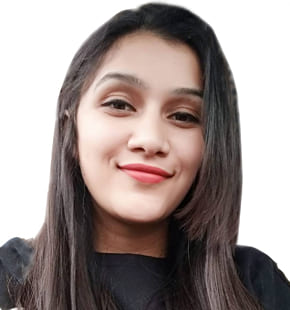
DR. PRIYANKA SHARMA
Email: priyanka.ph20201@inst.ac.in
Reg. No.: PH20201
-

MR. SHERILRAJ PM
Email: sherilraj.ph22217@inst.ac.in
Reg. No.: PH22217
-

MS. KANIKA ARORA
Email: kanika.ph21215@inst.ac.in
Reg. No.: PH21215
-
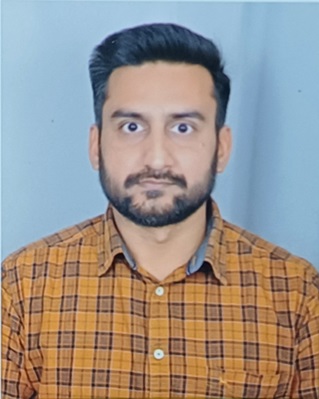
DR. DEEPAK BAINS
Email: deepak.npdf202401@inst.ac.in
Reg. No.: NPDF202401
-
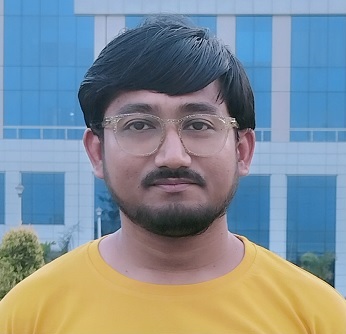
SWARAJ RANJAN GUPTA
Email: swaraj.rp1322421@inst.ac.in
Reg. No.: RP1322421
-
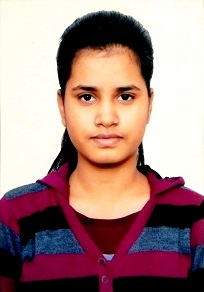
PRIYADARSHI GAUTAM
Email: priyadarshi.rp1342421@inst.ac.in
Reg. No.: RP1342421
Alumni
-

ASHWIN T SHAJI
Reg. No.: IN-2023/32
Designation: Intern Student
Present Affiliation: PhD with MEXT Scholarship at Kyushu Institute of Technology, Fukuoka, Japan starting October 2025
May 2023 - Jul 2023
-
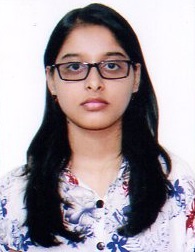
ANANYA BISWAS
Reg. No.: IN-2024/20
Designation: Intern Student
Present Affiliation: PhD in Chemistry at Washington State University, starting in Fall 2025
May 2024 - Jul 2024
-
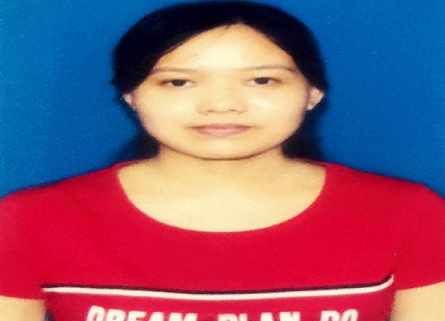
SURANG DEBBARNA
Reg. No.: IN-2024/16
Designation: Intern Student
May 2024 - Jul 2024
-
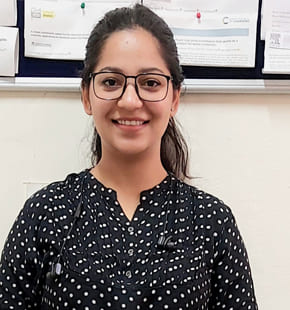
DR. NANCY SHARMA
Reg. No.: RA-01-202155
Designation: Post Docs/RA
Present Affiliation: Post Doc Researcher, Institut Parisien de Chimie Moleculaire, Sorbonne Univ
Jul 2023 - Jul 2024
-
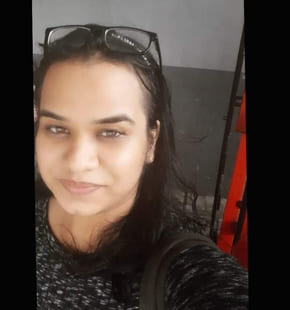
DR. KRITIKA SOOD
Reg. No.: PH17227
Designation: PhD Scholar
Present Affiliation: Post Doctoral Fellow, John Hopkins University, USA
Jan 2018 - Apr 2024
-

DR. MIMANSA
Reg. No.: PH19207
Designation: PhD Scholar
Present Affiliation: Postdoctoral Researcher, Albert Einstein College of Medicine, NY, USA
Aug 2019 - Aug 2024
-
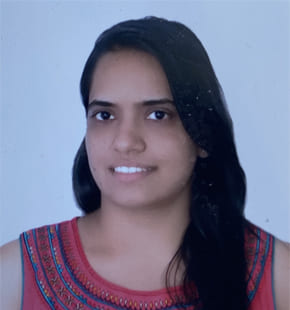
DR. NAVNEET KAUR
Reg. No.: PH16215
Designation: PhD Scholar
Present Affiliation: Post Doc Fellow, National High Magnetic Laboratory, Florida State University
Aug 2016 - May 2022
-
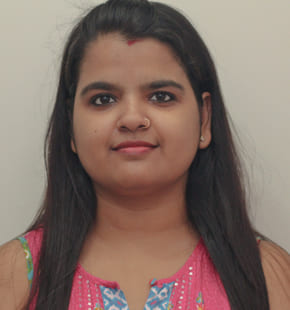
DR. PRANJALI YADAV
Reg. No.: PH15205
Designation: PhD Scholar
Present Affiliation: Medical Writer, DAVA Oncology
Aug 2015 - Dec 2021
-
1.
Intrinsically Pro-Apoptotic Gold Nanoclusters for Optical Tracing and Inhibition of Solid Tumors , Priyanka Sharma, Hao Yuan, Ruchi Verma, Nisha Mehla, Hemant, Poonam Sagar, Clothilde Comby-Zerbino, Isabelle Russier-Antoine, Christophe Moulin, Pierre-François Brevet, Nitin Singhal, Prakash P. Neelakandan, Sonalika Vaidya, Changkui Fu, Md. Ehesan Ali, Rohit Srivastava, Andrew Whittaker, Rodolphe Antoine, Asifkhan Shanavas , Advanced Healthcare Materials , 2025 , 14 , 10.1002/adhm.202405005 -
2.
Plasmonic semi shells derived from simultaneous in situ gold growth and anisotropic acid etching of ZIF-8 for photothermal ablation of metastatic breast tumor , Kritika Sood, Purvi Mathur, Sulagna Rath, Pranjali Yadav, Navneet Kaur, Priyanka Sharma, Mimansa, Deepak Singh Chauhan, Sonalika Vaidya, Rohit Srivastava, Abhijit De, Asifkhan Shanavas , Communications Chemistry , 2024 , 7 , 231 , 10.1038/s42004-024-01317-w -
3.
Lipid Nanoparticles for Brain Tumor Theranostics: Challenges and Status , Navneet Kaur, Priyadarshi Gautam, Dibyani Nanda, Avtar Singh Meena, Asifkhan Shanavas, Rajendra Prasad , Bioconjugate Chemistry , 2024 , 35 , 1283-1299 , 10.1021/acs.bioconjchem.4c00293 -
4.
Autologous Serum Protein Stabilized Silver Quantum Clusters as Host-Specific Antibacterial Agents , Kritika Sood, Asifkhan Shanavas , Nanomedicine , 2024 , 19 , 1761-1778 , 10.1080/17435889.2024.2374231 -
5.
Shielding against Breast Tumor Relapse with an Autologous Chemo-Photo-Immune active Nano-Micro-Sera based Fibrin Implant , Mimansa, Mohammad Adeel Zafar, Reena Das, Javed Naim Agrewala, Asifkhan Shanavas , Nanoscale , 2024 , 10.1039/D4NR01076K -
6.
BODIPY Directed One-Dimensional Self-assembly of Gold Nanorods , H Hemant, A Rahman, P Sharma, A Shanavas, PP Neelakandan , Nanoscale , 2024 , 16 , 12127-12133 , 10.1039/D4NR02161D -
7.
Gold Nanoclusters as High Resolution NIR-II Theranostic Agents , Nancy Sharma, Walaa Mohammad, Xavier Le Guével, Asifkhan Shanavas , ACS Chem. Biomed. Imaging , 2024 , 10.1021/cbmi.4c00021 -
8.
Methylene blue loaded K0.3Bi0.7F2.4:Yb,Er upconversion nanoparticles for Near-Infrared activated photodynamic therapy , Manisha Bungla, Priyanka Sharma, Asifkhan Shanavas, Ashok Ganguli , New Journal of Chemistry , 2024 , 10.1039/D3NJ04869A -
9.
Self-Assembled Nanobiomaterials for Combination Immunotherapy , Johns Paul V, Priyanka Sharma, Asifkhan Shanavas , ACS Applied Bio Materials , 2024 , 10.1021/acsabm.3c00826 -
10.
Glycol chitosan stabilized nanomedicine of lapatinib and doxorubicin for the management of metastatic breast tumor , Navneet Kaur, Priyanka Sharma, Mimansa, Mahendran Jaganathan, Rafika Munawara, Anjali Aggarwal, Asifkhan Shanavas , 2023 , Drug Delivery & Translation Research , 10.1007/s13346-023-01335-6 -
11.
Preclinical safety assessment of photoluminescent metal quantum clusters stabilized with autologous serum proteins for host specific theranostics , Kritika Sood , Pranjali Yadav, Manu Jamwal, Reena Das, Asifkhan Shanavas , 2023 , 7(3) , Nanotheranostics , 316-326 , 10.7150/ntno.82978 -
12.
Plasmonic nanodendrites stabilized with autologous serum proteins for sustainable host specific photothermal tumor ablation, , Mimansa, Smriti Bansal, Pranjali Yadav, Asifkhan Shanavas, , Materials Advances , 2023 , 10.1039/D3MA00576C -
13.
Nontoxic Metal-Free Visible Light-Responsive Carbon Nitride Quantum Dots Cause Oxidative Stress and Cancer-Specific Membrane Damage: , Pranjali Yadav , Mimansa, Kamalakannan Kailasam, and Asifkhan Shanavas , (2022) , ACS Applied Bio Materials , 10.1021/acsabm.1c01219 -
14.
Visible-light Activated ROS Generator Multilayer Film for Antibacterial Coatings: , Arshdeep Kaur Gill, Sanchita Shah, Pranjali Yadav, Asifkhan Shanavas, Prakash P Neelakandan, Debabrata Patra , (2022) , 10: 9869-9877 , Journal of Materials Chemistry B , 10.1039/D2TB01454H -
15.
Plasmonically active supramolecular polymer-metal organic framework hydrogel nanocomposite for localized chemo-photothermal therapy: , Navneet Kaur, Mimansa, Priyanka Sharma, Panangattukara Prabhakaran Praveen Kumar, Prakash P. Neelakandan, Asifkhan Shanavas , (2022) , ACS Applied Polymer Materials , 10.1021/acsapm.2c01646 -
16.
Gold capsuled polymeric nanomedicine for synergistic breast cancer photo-chemotherapy: , Navneet Kaur, Eswara Rao Puppala, Rohit Srivastava, V.G.M. Naidu, Asifkhan Shanavas , (2022) , Journal of Nanoparticle Research, , 10.1007/s11051-022-05640-y -
17.
High Drug Loading Nanoparticles Stabilized with Autologous Serum Proteins Passively Inhibits Tumor Growth: , Mimansa, Manu Jamwal, Reena Das, Asifkhan Shanavas , (2022) , Biomacromolecules , 10.1021/acs.biomac.2c00907 -
18.
Penicillamine Capped Red-Emitting Gold Nanoclusters for Therapeutic Application: , Dipankar Bain, Mimansa, Aarti Devi, Subarna Maity, Asifkhan Shanavas* and Amitava Patra* , (2022) , ACS Sustainable Chemistry & Engineering , https://doi.org/10.1021/acssuschemeng.2c03605 -
19.
Glycol chitosan stabilized bimolecular nanoparticles for chemo photothermal killing of breast cancer cells: , Navneet Kaur, Mimansa, Adrija Aditya, Asifkhan Shanavas , (2022) , 100040 , Biomedical Engineering Advances , 10.1016/j.bea.2022.100040 -
20.
Gold–BODIPY Nanoparticles with Luminescence and Photosensitization Properties for Photodynamic Therapy and Cell Imaging: , A Rahman, PPP Kumar, P Yadav, T Goswami, A Shanavas*, HN Ghosh*, PP Neelakandan* , (2022) , 5: 6532-6542 , ACS Appl. Nano Mater , 10.1021/acsanm.2c00616 -
21.
Nontoxic In Vivo Clearable Nanoparticle Clusters for Theranostic Applications: , Pranjali Yadav, Mimansa, Rafika Munawara, Kanchan Kapoor, Shubhra Chaturvedi, Kamalakannan Kailasam, Samir Kumar Biswas, Dhirendra Bahadur, Rohit Srivastava, Anil Kumar Mishra, and Asifkhan Shanavas , (2022) , ACS Biomaterials Science & Engineering , 10.1021/acsbiomaterials.1c01579 -
22.
Biodegradable Protein-Stabilized Inorganic Nanoassemblies for Photothermal Radiotherapy of Hepatoma Cells: , Pranjali Yadav , Shubhra Chaturvedi, Samir Kumar Biswas, Rohit Srivastava, Kamalakannan Kailasam, Anil Kumar Mishra, and Asifkhan Shanavas , (2022) , ACS Omega , 10.1021/acsomega.1c07324 -
23.
Taking leads out of nature, can nano deliver us from COVID-like pandemics?: , Navneet Kaur, Priyanka Sharma, Adrija Aditya and Asifkhan Shanavas , (2022) , 8: 022002 , Biomedical Physics & Engineering Express , 10.1088/2057-1976/ac4ec8 -
24.
Microwave mediated synthesis of dopamine functionalized copper sulphide nanoparticles: An effective catalyst for visible light driven degradation of methlyene blue dye: , Deepak Rohilla, Navneet Kaur, Asifkhan Shanavas, Savita Chaudhary , (2021) , 277: 130202 , Chemosphere , 10.1016/j.chemosphere.2021.130202 -
25.
Emissive radiodense stealth plasmonic nanohybrid as X-ray contrast and photo-ablative agent of cancer cells: , Jinal M Mehta, Nishant K Jain, Deepak S Chauhan, Rajendra Prasad, Mukesh K Kumawat, Mukesh Dhanka, Asifkhan Shanavas, Rohit Srivastava , (2021) , 27: 102181 , Materials Today Communications , 10.1016/j.mtcomm.2021.102181 -
26.
The Role of Gold Nanoclusters as Emerging Theranostic Agents for Cancer Management: , Kritika Sood, Asifkhan Shanavas , (2021) , 9: 33-42 , Current Pathobiology Reports , 10.1007/s40139-021-00222-4 -
27.
Natural derivatives with dual binding potential against SARS-CoV-2 main protease and human ACE2 possess low oral bioavailability: a brief computational analysis: , Priyanka Sharma, Asifkhan Shanavas , (2021) , 39: 5819-5830 , Journal of Biomolecular Structure and Dynamics , 10.1080/07391102.2020.1794970 -
28.
Synthesis and Anti‐Proliferative Activity of a Triazole‐Fused Thymidine Analogue: , A Rahman, P Sharma, N Kaur, A Shanavas*, and PP Neelakandan* , (2020) , 5: 5473-5478 , ChemistrySelect , 10.1002/slct.202001013 -
29.
Dopamine functionalized CuO nanoparticles: A high valued “turn on” colorimetric biosensor for detecting cysteine in human serum and urine samples: , D Rohilla, S Chaudhary, N Kaur, A Shanavas , (2020) , 110: 110724 , Materials Science and Engineering: C , 10.1016/j.msec.2020.110724 -
30.
Glycol chitosan in situ coating on PLGA nanoparticle curtails extraneous paclitaxel precipitates and imparts protein corona independent hemocompatibility: , N Kaur, P Mathur, P Yadav, S Chakraborty, A Shanavas , (2020) , 237: 116170 , Carbohydrate Polymers , 10.1016/j.carbpol.2020.116170 -
31.
Aggregation Enhances Luminescence and Photosensitization Properties of a Hexaiodo-BODIPY: , PPP Kumar, P Yadav, A Shanavas, and PP Neelakandan* , (2020) , Front., 4: 965-972 , Mater. Chem. , 10.1039/D0QM00010H -
32.
Nanomolar Detection of Biothiols via Turn-ON Fluorescent Indicator Displacement: , PPP Kumar, N Kaur, A Shanavas, and PP Neelakandan* , (2020) , 145: 851-857 , Analyst , 10.1039/C9AN02222H -
33.
A polymeric core-shell combinatorial nanomedicine for synergistic anticancer therapy: , Shanavas, Asifkhan; Jain, Nishant; Kaur, Navneet; Thummuri, Dinesh; Prasanna, Maruthi; Prasad, Rajendra; Naidu, Vegi; Bahadur, Dhirendra; Srivastava , (2019) , Just accepted manuscript , ACS Omega , 10.1021/acsomega.9b02167 -
34.
Metal-free visible light photocatalytic carbon nitride quantum dots as efficient antibacterial agents: An insight study: , P Yadav, N S Thangaraj, B Purohit, A Shanavas, K Kailasam , (2019) , 152: 587 , Carbon , 10.1016/j.carbon.2019.06.045 -
35.
Synthesis and characterizations of luminescent copper oxide nanoparticles: Toxicological profiling and sensing applications: , S Chaudhary, D Rohilla, A Umar, N Kaur, A Shanavas , (2019) , 45, 12,: 15025.. , Ceramics International , 10.1016/j.ceramint.2019.04.239 -
36.
Magnetic and photocatalytic curcumin bound carbon nitride nanohybrids for enhanced glioma cell death: , Yadav, Pranjali; Zhang, Cheng; Whittaker, Andrew; Kailasam, Kamalakannan , (2019) , 5: 6590 , ACS Biomaterials Sciences and Engineering , 10.1021/acsbiomaterials.9b01224 -
37.
A Three-Component Supramolecular Nanocomposite as a Heavy-Atom-Free Photosensitizer: , PPP Kumar, P Yadav, A Shanavas, S Thurakkal, J Joseph, and PP Neelakandan* , (2019) , 55: 5623-5626. , Chem. Commun. , 10.1039/C9CC02480H -
38.
Glycol chitosan assisted in situ reduction of gold on polymeric template for anti-cancer theranostics: , A Shanavas, A K Rengan, D Chauhan, L George, M Vats, N Kaur, P Yadav, P Mathur, S Chakraborty, A Tejaswini, A De, R Srivastava , (2018) , 110: 392-398 , Int. J. Biol. Macromol , 10.1016/j.ijbiomac.2017.11.127 -
39.
Enhanced EPR directed and Imaging-guided Photothermal Therapy using Vitamin E Modified Toco-Photoxil: , D S Chauhan, A B Bukhari, G Ravichandran, R Gupta, L George, R Poojari, A Ingle, A K Rengan, A Shanavas, R Srivastava, A De , (2018) , 8: , Scientific Reports , 10.1038/s41598-018-34898-3 -
40.
Supramolecular confinement within chitosan nanocomposites enhance singlet oxygen generation: , K Naim, S T Nair, P Yadav,A Shanavas, P P Neelakandan , (2018) , 83: 418 –422.. , ChemPlusChem , /10.1002/cplu.201800041
-
1.
Polyethyleneimine-based biomaterials for therapy and diagnostic applications , Pranjali Yadav, Mimansa, Asifkhan Shanavas , 2024 , eBook ISBN: 9780323952347 -
2.
Targeting strategies using PLGA nanoparticles for efficient drug delivery , Priyanka Sharma, Navneet Kaur, Asifkhan Shanavas , 2023 , 123-151 , 10.1016/B978-0-323-91215-0.00016-9 -
3.
Gold Nanoclusters as Emerging Theranostic Interventions for Biomedical Applications: , Kritika Sood, Asifkhan Shanavas , (2021) , 1-31 , Springer, Singapore , 10.1007/978-981-16-2782-8_1
- 1. Multi-layer Nanocomposite: , ohit Srivastava, Dhirendra Bahadur,Mohammed Aslam,Sonara Dineshkumar Keshavlal, Asifkhan Shanavas , Application number: 811/MUM/2011, Indian Patent Number: 271416, Date of filing: 21st March 2011, Date of grant & recordation in the register of patent: 19th Feb 2016
- 2. Tpgs Comprised Gold Coated Poly -(lactic-co-glycolic Acid) Nanostructures And Process For Its Preparation: , Rohit Srivastava, Deepak Singh Chauhan, Radhika Poojari, Aravind Kumar Rengan, Abhijit De, Amirali Bakarali Bukhari, Asifkhan Shanavas, (2020) , 2015-10-28 , 354678
- 3. A Hydrogel Composition, Process Of Preparation And Application Thereof: , Asifkhan Shanavas,Prakash Pandisala Neelakandan,Panangattukara Prabhakaran Praveen Kumar,Navneet Kaur, (2021) , Indian Patent Number: 436555. Date of grant & recordation in the register of patent: 30th June 2023
- 4. One-pot Process For Preparation Of Metallic Semi Shells: , Kritika Sood, Purvi Mathur, Pranjali Yadav, Navneet Kaur, Rohit Srivastava, Abhijit De, Asifkhan Shanavas, (2021) , 20211101684
Scientist-D: Institute of Nano Science & Technology, Mohali, Punjab (January 2022 to Present till date)
Scientist-C: Institute of Nano Science & Technology, Mohali, Punjab (January 2018 to December 2021)
Scientist-B: Institute of Nano Science & Technology, Mohali, Punjab (June 2014 to December 2017)
Visiting Scientist/Academic: Australian Institute of Bioengineering and Nanotechnology, University of Queensland, Brisbane, Australia (October 2017 to July 2018)
Educational Qualification
PhD (2015) in Biomedical Engineering (IIT Bombay)
MTech (2010) in Nanomedical Sciences (Amrita Centre for Nano Sciences, Kochi Campus, Amrita Vishwa Vidyapeetham)
MSc (2007) in Biochemistry (PSG College of Arts and Sciences, Coimbatore)
BSc (2005) in Biochemistry (PSG College of Arts and Sciences, Coimbatore)
2024: Member of The National Academy of Sciences, India (NASI)
2023: DBT Har Gobind Khorana Innovative Young Biotechnologist Fellowship (IYBF)
2022: BRICS Young Innovator
2016- 2017: DBT Indo-Australian Career Boosting Gold Fellowship
2010- 2014: MHRD Institute Teaching Assistantship, IIT Bombay
2013: DST Travel Grant
2011: Bioencapsulation Research Group Travel Grant
2008-2010: DST fellowship, MTech Nanomedical Sciences, ACNS
2006: JNCASR summer research fellowship
Memberships in Societies
Member of American Chemical Society
American Society for Nanomedicine
Indian Society of Nano Medicine
-
Title: NIR-II active quasi-molecular and plasmonic nanomaterials for bio-imaging and therapy
PI: Dr. Asifkhan Shanavas
CO-PI: Dr. Prakash P. Neelakandan
Funding Amount: 124.24 lakhs
Tenure: 2025-2028
Funding Agency: ANRF (SUPRA)
-
Title: Nanoparticle enabled delivery of novel protein constructs with demonstrated wound healing properties to heal injured corneas
PI: Dr. Asifkhan Shanavas
Funding Amount: 49.9 lakhs
Tenure: 2024-2028
Funding Agency: ICMR
Additional Info: Collaborative project with Dr.Manni Luthra (Main PI), Dept of Immunopathology, PGIMER
-
Title: Optical tracing and inhibition of metastatic tumor with metal quantum clusters
PI: Dr.Asifkhan Shanavas
Funding Amount: 61.5472 lakhs
Tenure: 2024-2027
Funding Agency: DBT (HGK-IYBF)
-
Title: Plasmonic nanostructures derived from metal organic frameworks for photo-theranostic applications
PI: Dr. Asifkhan Shanavas
Funding Amount: 41.62 lakhs
Tenure: 2023-2026
Funding Agency: SERB (CRG)
-
Title: Reconstitutable lyophilized plasmonic semishells as near infra red photothermal nano-transducers for cancer treatment
PI: Dr. Asifkhan Shanavas
Funding Amount: 35.896 lakhs
Tenure: 2017-2020
Funding Agency: DBT (NanoBio)
-
Title: Gold capsuled combination nanomedicine for target specific therapy of chemoresistant breast tumors
PI: Dr. Asifkhan Shanavas
Funding Amount: 38.272 lakhs
Tenure: 2017-2020
Funding Agency: SERB (CRG)
-
Title: Dynamic Self-assembled Nucleic Acid Analogues
PI: Dr. Prakash P. Neelakandan
CO-PI: Dr. Asifkhan Shanavas
Tenure: 3 years
Funding Agency: DBT

